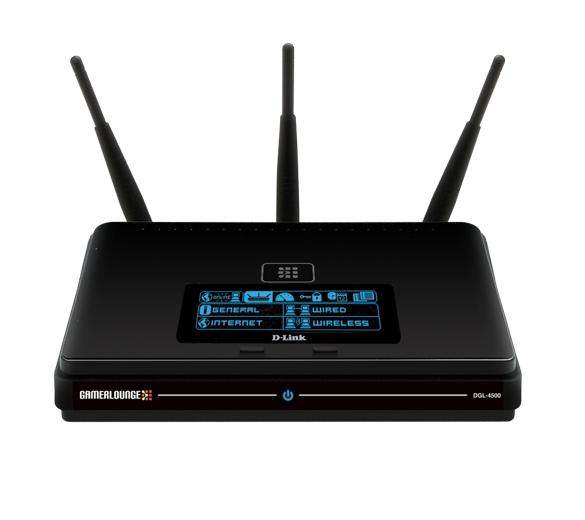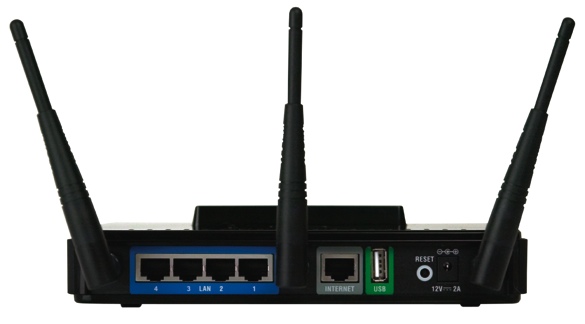D-Link DGL-4500 Xtreme N Gaming Router
D-Link appears to have snuck out a new router without me having any advanced notice. It seems that my beloved DGL-4300 finally has an exit strategy – the DGL-4500.
Built for gaming, the DGL series routers have a ton of tweaks to ensure the lowest ping times in games – even when your wife is downloading old 80’s hair metal off BitTorrent. I’ve been using the DGL-4300 since it was released and I have to say it has been the most rock solid router I have ever used. It would literally run for months until I decided for some reason to disconnect it from the UPS and move it. The priority engine and dynamic fragmentation of packets really makes this thing sing. I get pings under 30 on so many servers on the net it just isn’t funny playing TF2.
This update is really nice. It still has the great 2.4 GHz b/g wireless, gigabit ethernet and slick design. They’ve added 2.4 GHz and 5 GHz 802.11 a/n, as well as an all new OLED display on the front with control buttons to interact with a ton of the router features. The thing just looks slick, has a clean front, and glows blue when you touch the buttons. Very, very cool.
You can view a clock, the router event log, connection status for wireless, wired and WAN, send/receive speed (great for monitoring torrents), and a ton of other great stuff. Compared to the 4300, this model has a working NTP client to keep the time in sync, easier to understand configuration screens, and greater flexibility with things like Dynamic DNS. The UI is still the slickest of all D-Link consumer routers (considering their market is gamers, that’s a good thing) and provides plenty of feedback. Many of the options no longer require a reboot to complete configuration.
For now, the benefits of 5 GHz 802.11n are wonderful. There are so few devices in the field that actually have it the spectrum is clean and clear. I can pick up around eight 2.4 GHz b/g networks in my neighborhood alone, but I’m the lone 5 GHz station so far, and the bandwidth tests represent that speed. I’m currently running in 802.11 a/n mode since not all of my systems are n-capable (but all are a-capable). I setup the 4300 in bridge mode to provide g-only service to my iPhone.
I’ll report back on how stable the new DGL-4500 is after a few months of testing. If it is anything like the 4300, that could be a long time from now.


